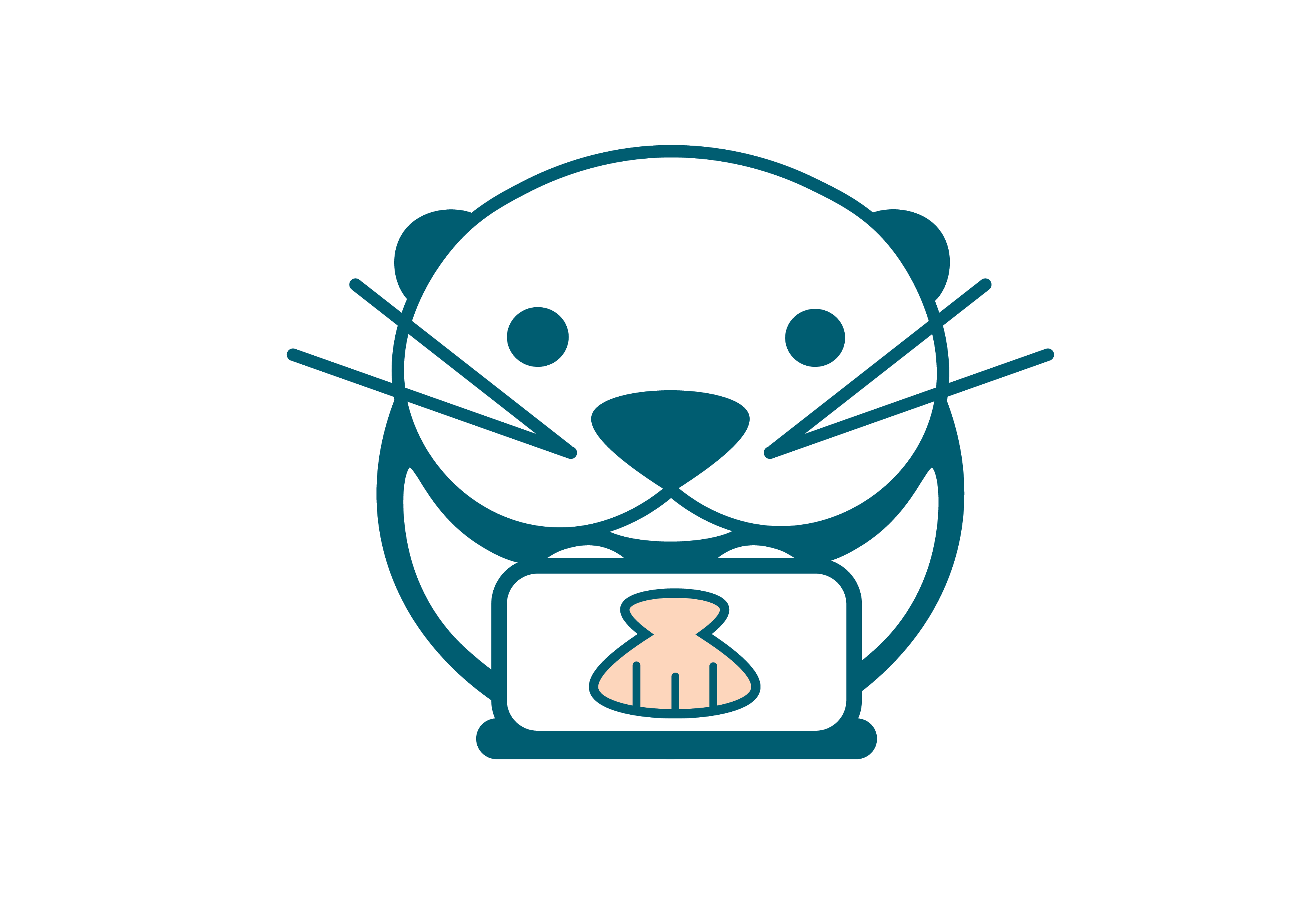Overview
Design a voice user interface for an automotive vehicle which will allow users to interact with their CD player, FM/AM radio, satellite radio, and internal GPS system. To start off, a task flow chart, call flow chart and sample dialogue must be created in order to create a series of referential documents meant to keep the wireframes as simple and straight forward as possible.
Prototype Commands
Company/Client
For this project, a Fake VUI company called Atlas Voice was created. By calling the VUI Atlas, it gives the machine a greater sense of identity instead of it simply being a voice and set of features. Personification is an easy way to connect users with a product and make communications easier, (Yoon, 2016).
Problem Statement
Atlas Voice would like to have a digital interface designed for their new VUI compatible cars. However, this poses a lot of issues as screens tend to be very distracting to a driver if the design has far too much movement, or flashing. For this voice user interface, Atlas Voice wants to put something with a futuristic feel on the market, but not anything which would be considered a danger to the driver, (Sirch, 2020). The design must be minimalist and avoid anything which could be seen as a distraction to the driver, but while also being extremely accessible and flexible.
Responsibilities
Create a series of preliminary documents which will layout the foundation of the wireframes during the design phase. As the wireframes are being created, they must take current trends into consideration, while being careful not to use graphics which could distract the driver. To further verify current market trends, research will need to be done.
Call Flow Chart
Here is a look at what the task flow/call flow chart looked like upon being finished. This was used to create a task flow and wireframes which would work with the user and how they speak naturally.
Dialogue Sample
First Drafts
Before the final version and Atlas voice, there was an idea to make a mascot similar to the ones you may find in Japan. However, after exploring what is currently being done in the industry, it was deemed too childish and scrapped. The original idea was to make a friendly looking map pin named Atlas for users to interact with while using the system.
Final Prototype - Guidance System
The screens used to interpret answers, give feedback and display information according to what the user is verbally asking for. In this case, the user wants directions to a specific location as they drive.
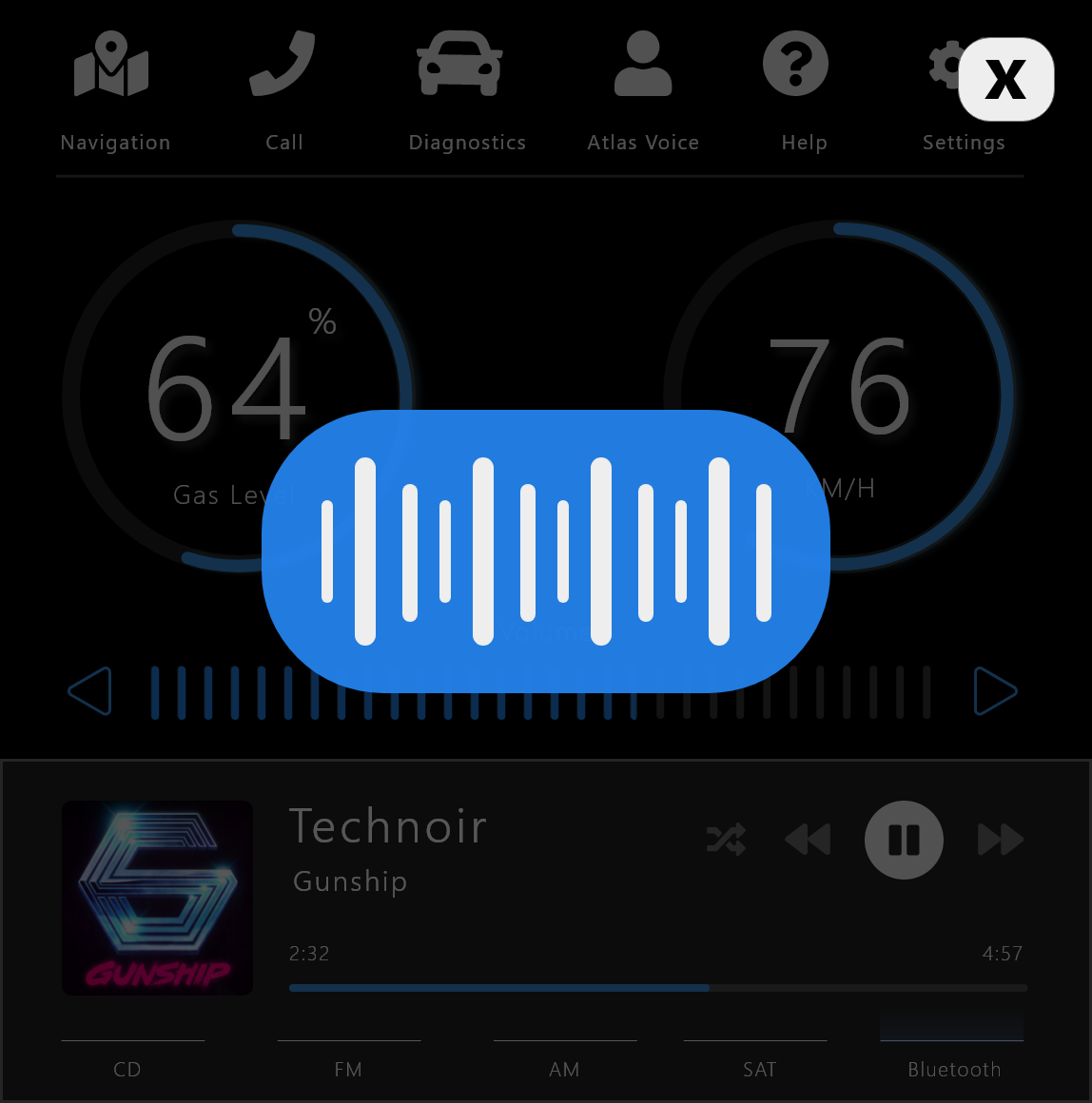
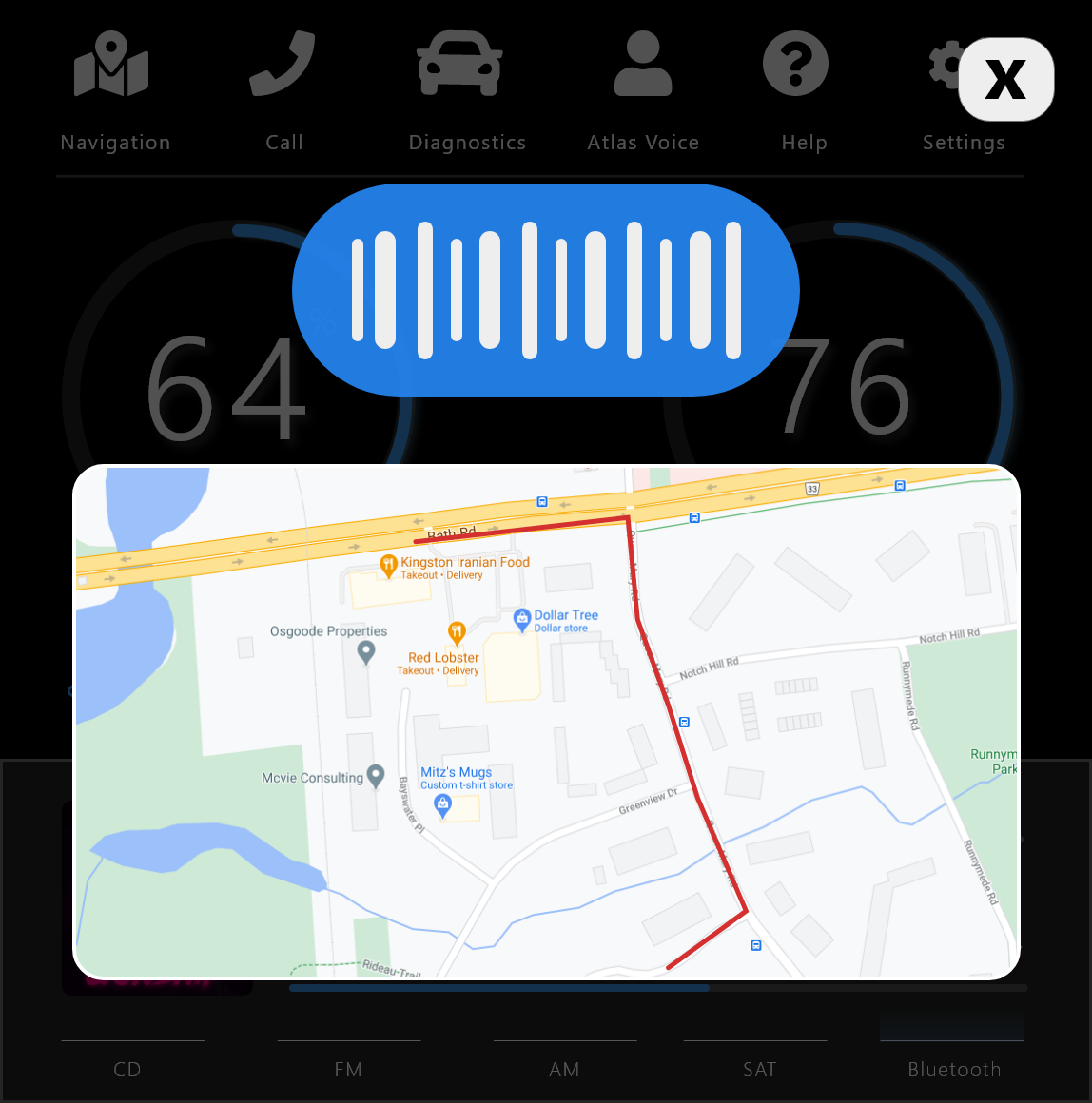
Final Prototype - Calling System
Here, the user is starting up the calling system in order to contact a close friend. For convivence, Atlas Voice will show the most used contacts as a means of cutting down interaction time for the user.


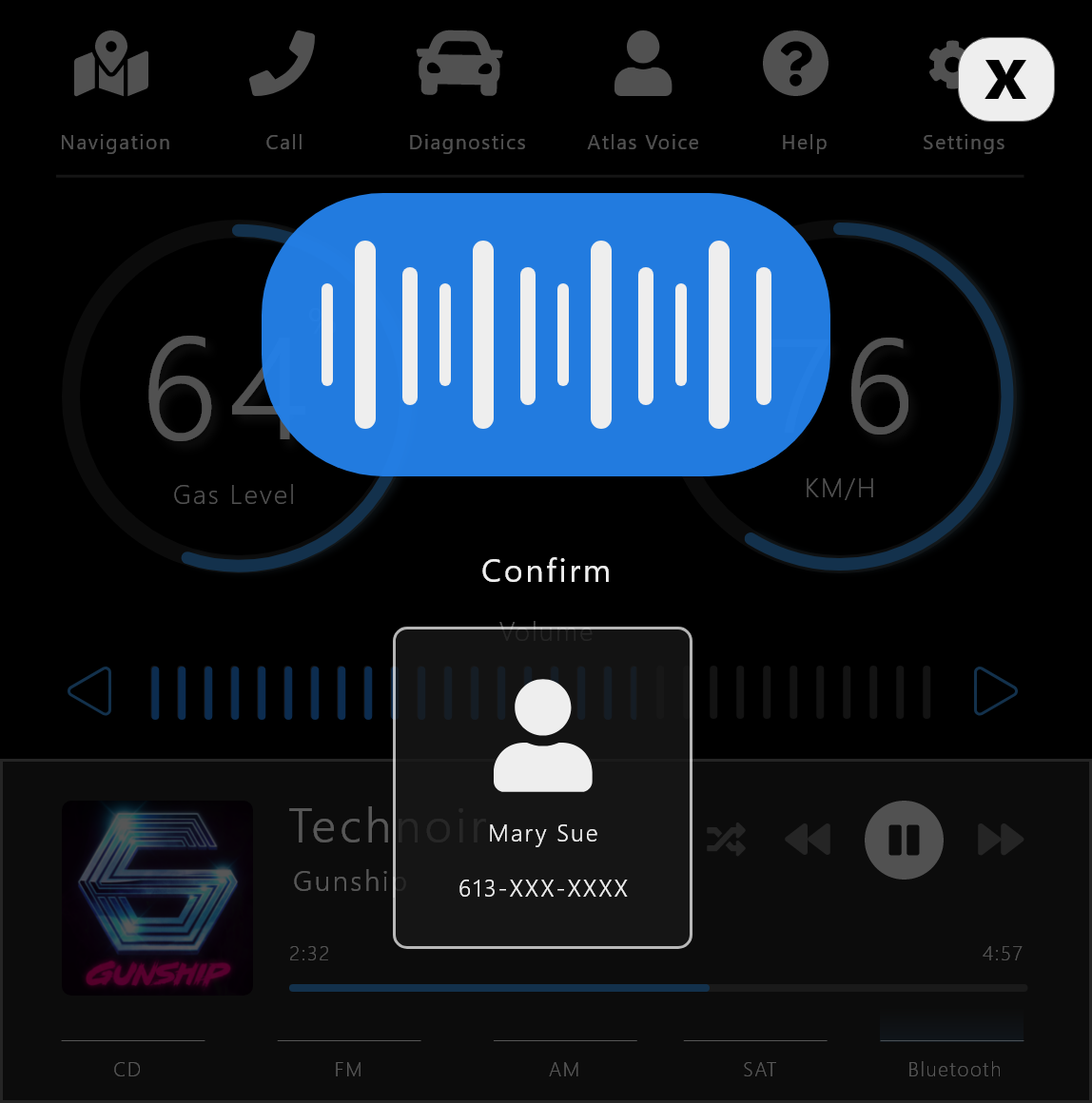
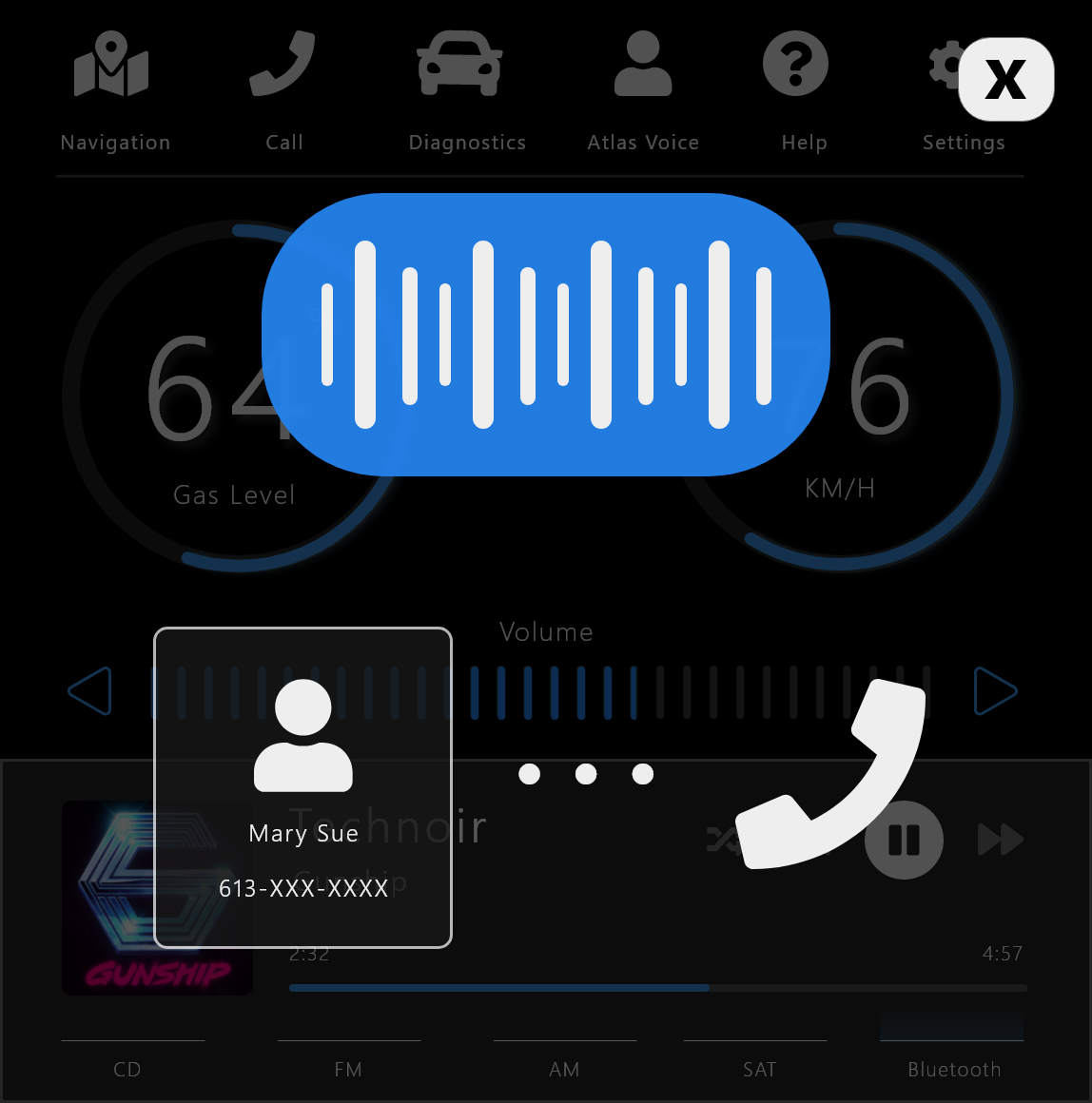
Final Prototype - Music System
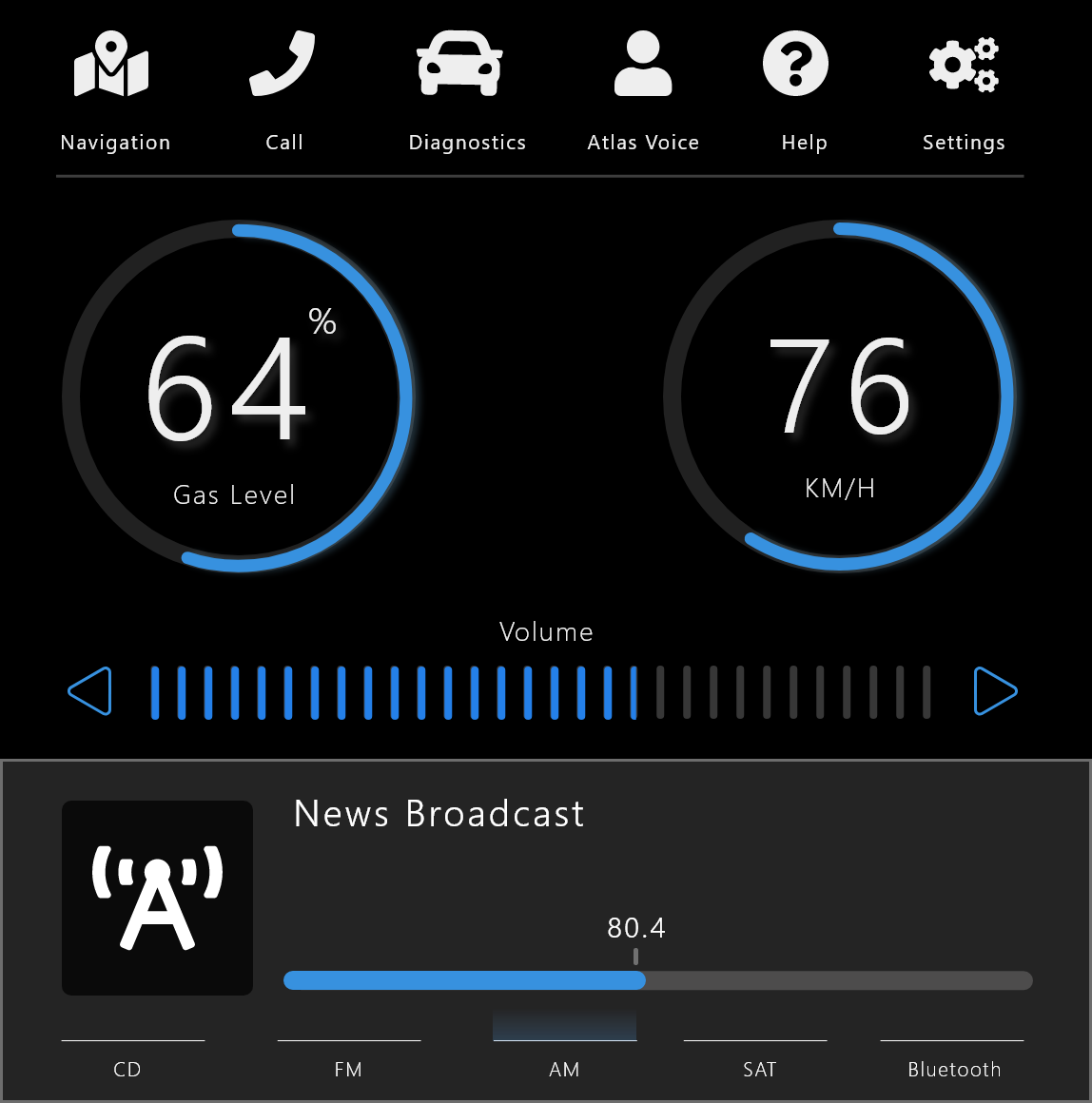


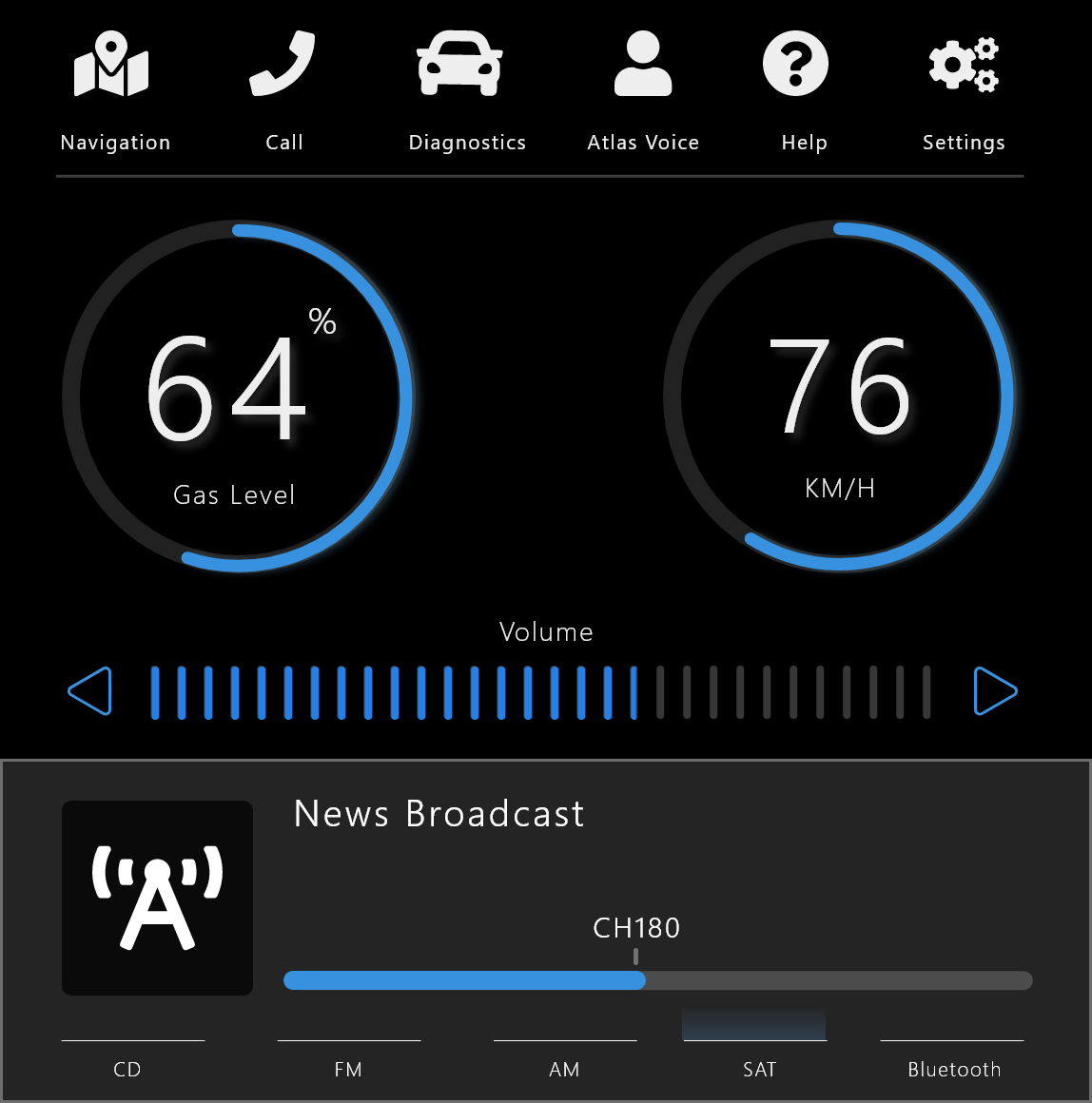
Car Set-Up
References
Sirch, M. (2020, Aug 06). The state of automotive in-car user experience in 2020. Retrieved from UX Collective: https://uxdesign.cc/the-state-of-automotive-in-car-user-experience-in-2020-57cc307abd9c
Yoon, J. (2016, Aug 18). Product Personification: An experiment in design. Retrieved from Memebox: https://medium.com/memebox/product-personification-an-experiment-in-design-1065d9049d6a
All icons were provided by the Font Awesome Website.
